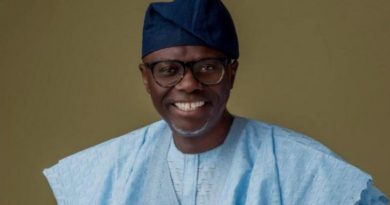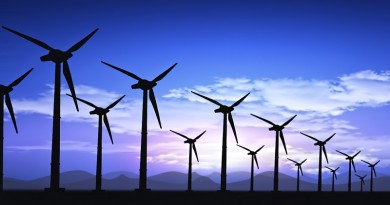We need to address climate change impact on migratory species- CMS expert
Animals and bird species that migrate around the world struggle to adapt to climate change. The Bonn-based UN Convention on Migratory Species (CMS) aims to help them. Climate counsellor Colin Galbraith explains how.
You have been running a workshop on migratory species and climate change here in Bonn. Has the topic gained higher priority in recent years?
Absolutely. There is no doubt in my mind that climate change is happening very rapidly and happening around the world. And what we are looking at is the impact on migratory species in particular. It is a key problem that we have to address now. We used to think that climate change would happen in 20 to 30 years time. The reality is it is happening now and in all parts of the world. The workshop focused on what actions we can take and put into place now.
Climate change is having an impact on species of all sorts. What is the particular challenge with migratory species?
The obvious and big challenge is that they move and do not stay in one place. Therefore any action has to be international, and about countries working together to take action. The changes we are seeing are profound: whales are changing their migration routes, birds are changing migration routes. And the timing that we used to see of things happening in nature is changing dramatically. We are trying to get international action that can help species adapt to this rapid climate change.
So, what actions can we take? Having large protected areas in a network, for example in a fly-way on a migration route, can help limit other impacts. From pollution to limiting habitat change, there is a whole range of issues that governments and others can tackle that will help us adapt and change with climate change.
Those are all measures aimed at reducing other problems and impacts. What about climate change itself?
What we are seeing is that climate change comes on top of all these other changes, and what we are trying to do is look at the overall resilience of migratory species. We need to tackle climate change itself in reducing our carbon budget, and in looking at the ways we live as human beings.
But, the changes that are happening to migratory species, like penguins, will impact us as well. Let us take one example: fishing around the world. The numbers of fish populations and their distribution is changing in relation to climate change. As that happens, then communities around the world that depend on fishing for their livelihoods will have problems. So there is a direct link from what happens to migratory species because of climate change, to what happens to our own well-being. We have to tackle all these threats together in a holistic approach. The focus is on bringing scientists and policy makers together to address these challenges, and communicate these issues to others around the world.
You mentioned penguins as an example for migratory species. What are the particular challenges for penguins and what can the international community do about those?
There are two challenges really. One is dramatic habitat change. So here we come back to limiting our carbon budget. But they also feed on fish. And fish stocks are changing as well, so we need to regulate and manage the fisheries that occur alongside penguin populations. A very practical action is to look at the fishing regimes around these areas and observe the changes.
There have also been various reports recently about a dramatic warming in the ocean which is affecting fish supplies. Even the North Sea species are changing. This is happening so fast, scientists are surprised by it. What can actually be done within the time span that we have available?
Again, this is about looking at how we use and exploit these areas. In the North Sea the plankton regimes are moving northwards very rapidly. The bird populations that depend on the fish that in turn depend on the plankton are changing and reducing in some areas, and moving North in some other areas. We need to look at how we are managing these areas, and how we can slow down that change to a degree. But we also need to consider alternatives. If fish stocks change so rapidly that we cannot adapt with them, we have to look at other ways to get the human population fed and achieve well-being overall.
Will fishery be able to adapt to the rapid changes of fish stocks’ migration routes?
This is a very difficult time for people who are interested in climate change measures, with the Trump administration having taken over in the USA. Do you expect continuity in your dealings with the USA, will you still be working with the same scientific and polcy experts?
I hope so and I think so. The USA and other countries have a huge amount to contribute to our thinking. And as we are going forward, I expect that to continue, so that we have a collective global effort in conserving migratory species. And I see no reason why that should change. We need everyone to participate in that international dialogue – scientifically and politically. The workshop has been looking at this evidence-based, so that anyone, politicians and others, can actually address that and be comfortable with what we are suggesting about migratory species and climate change. I think, where we are now, we have been a great grouping of 120 countries. The more countries which join and participate in that discussion and debate the better.
Will nominated US environment chief Pruitt support CMS?
Do you have an example of a particularly successful move to protect migratory species against the background of climate change?
Within the European Union there is a network of protected areas. There has been some analysis done that looks at bird populations on these areas compared to other non-protected areas. The outcome is that protected areas are working and have been maintaining diversity and the numbers of birds well over the past 20 years.
What happens when migratory areas go across the European Union border, for example, into North Africa?
These are challenges. And many of our migratory species in Europe do go from Europe into Africa and back each year. So, we are working across countries, from Europe into Africa, to look at protected areas, but also to try and build community involvement. If local communities in Africa really come in behind an initiative on conservation, then this has got a much better chance at success. There are good examples of that happening in Africa and in South America. We had examples from Ecuador, where local communities are being supported to maintain the forest areas around their settlements. And that is what we want and need to see, that local communities become involved in the conservation effort.
Professor Colin Galbraith is a Scottish environmental consultant and the current Vice Chairman of the Scientific Council on the Conservation of Migratory Species (CMS). He specializes on nature conservation issues and acts as Climate Change Counselor. The interview was conducted by Irene Quaile.





